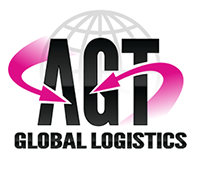Is Your Reverse Supply Chain Setup to Maximize Profits?
There is no denying that the rapid growth of e-commerce has had a drastic effect on supply chain operations, more specifically the expansion of reverse logistics operations.
In 2017 alone, e-commerce sales grew in the U.S. by 17%. Consumers spent $453 billion on the web for retail purchases in 2017, a 16% increase compared with $391 billion in 2016. That’s the highest growth rate since 2011, when online sales grew 17.5% over 2010.
Some have begun to call this current business climate as the “Age of Entitlement.” This simply means that customers now more than ever before are demanding goods be cheap, arrive fast, and with no pressure connected to the buying experience.
For example, it has become common practice for online shoppers to order much more product than they ever intend on buying. Shoppers commonly order the same shirt in 2 different sizes and 2 different colors, pick the size that fits best and the color that looks best, and return the other 3 shirts. While this is easy and convenient for the buyer, a whole new process has just begun for the seller as they need to find a way to reuse the 3 shirts that didn’t make the cut.
If you are riding the e-commerce wave and have plans to grow in the coming year, here are some things you need to consider when it comes to maximizing profit through reverse logistics operations.
- Do you have plans to grow your e-commerce activity in 2018? It’s important to understand that growth and increased output will bring about a higher demand for a refined and well-organized reverse supply chain. In order for that increased output to result in measurable profit, a sound strategy must be in place for the items that don’t make the cut with consumers.
- Are there currently measures in place within your company/organization to maximize profitability through reverse logistics strategies? If you are currently in a logistics or supply chain position, take a closer look at the return process and where those goods are going or how they are being reused. Just one or two small changes to the process, shipping partner, or final destination could result in major changes to profitability.
- Has your company/organization ever used or considered using a 3pl provider before? If you have limited bandwidth and resources for managing the returns process it may be time to consider integrating a 3PL partner into the process. Not only will this free up time, working with specialists who are experts in reverse logistics will ensure efficiency.
- What are the potential business benefits to closing gaps in the reverse supply chain? This is likely something you have considered before, but take time to crunch the numbers. If you were able to increase profit on returns by X percent, what impact would that have on your bottom line? Another important consideration is whether this would impact the price of your product(s)? The market is more competitive than ever and a small change in price could pay dividends.
As mentioned in the opening, the e-commerce market is growing exponentially and shows no sign of slowing down, but if you truly want to benefit you must incorporate smart and efficient reverse logistics operations into your supply chain.

